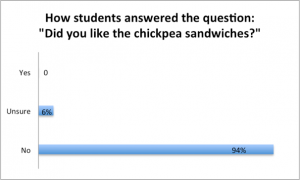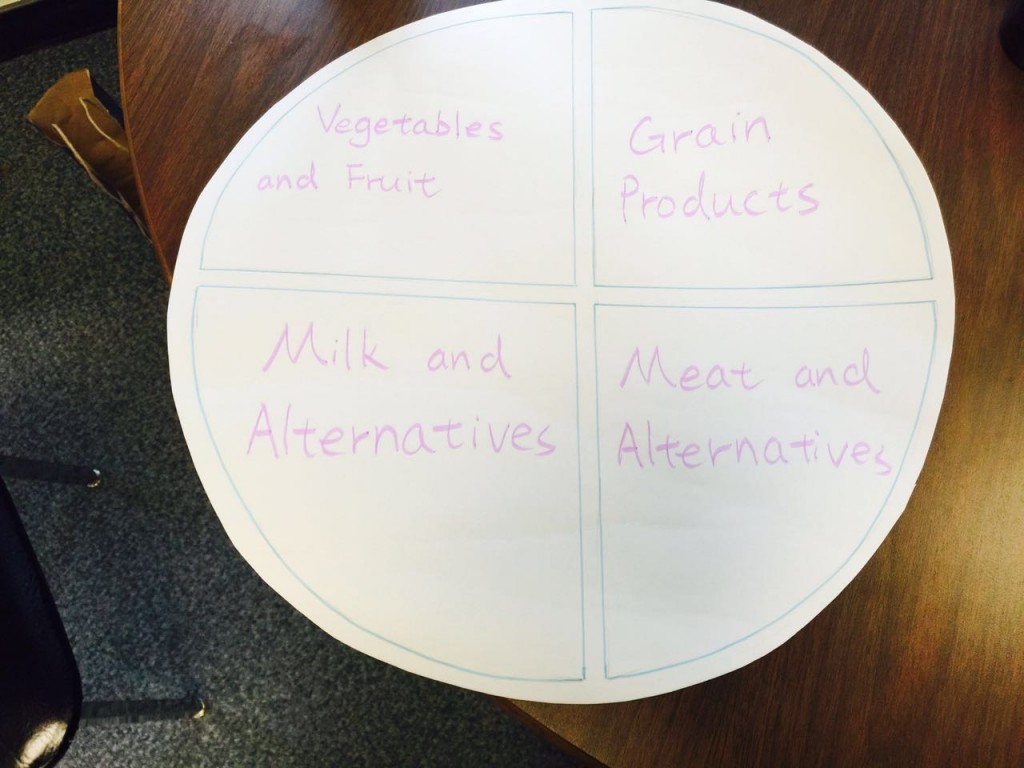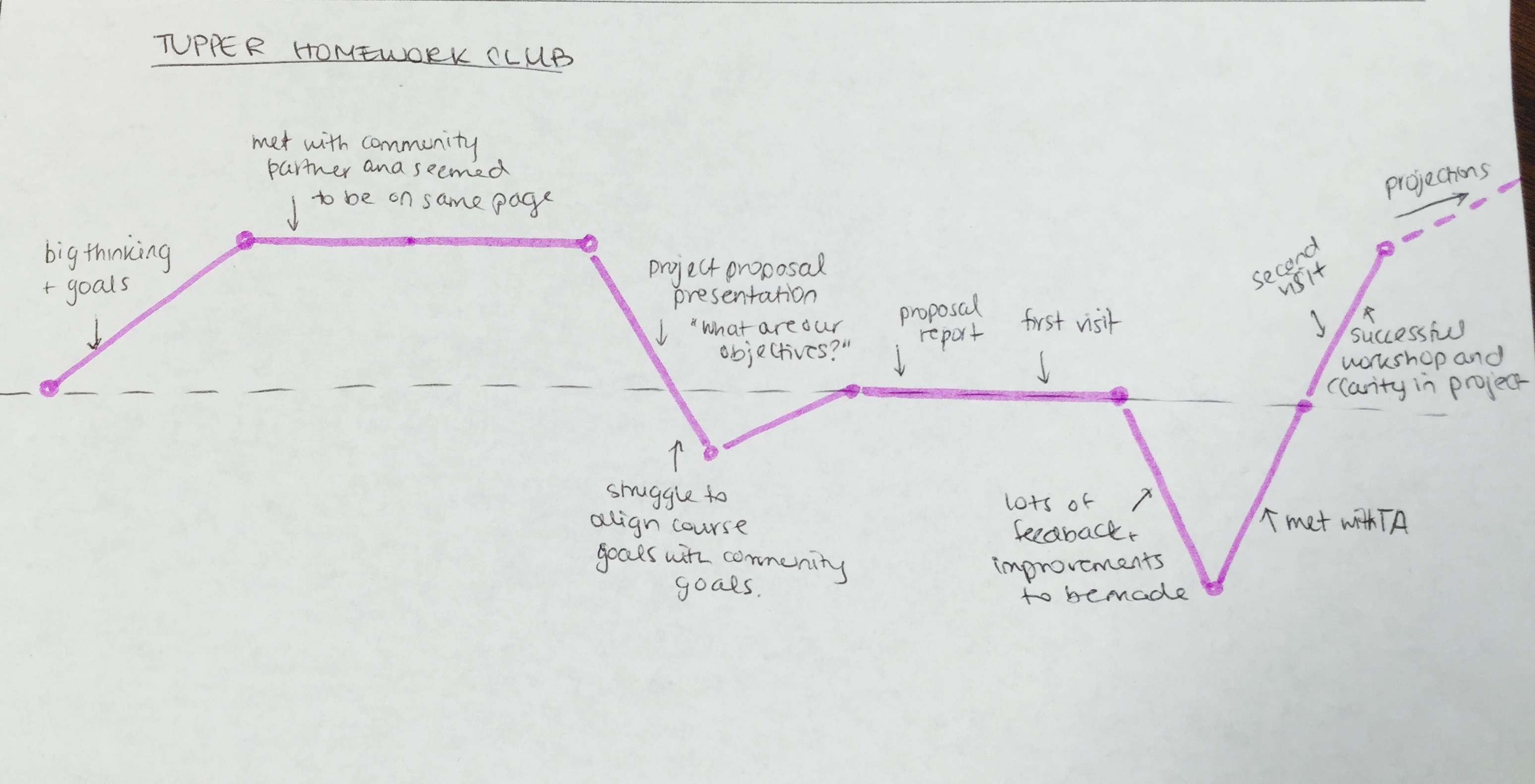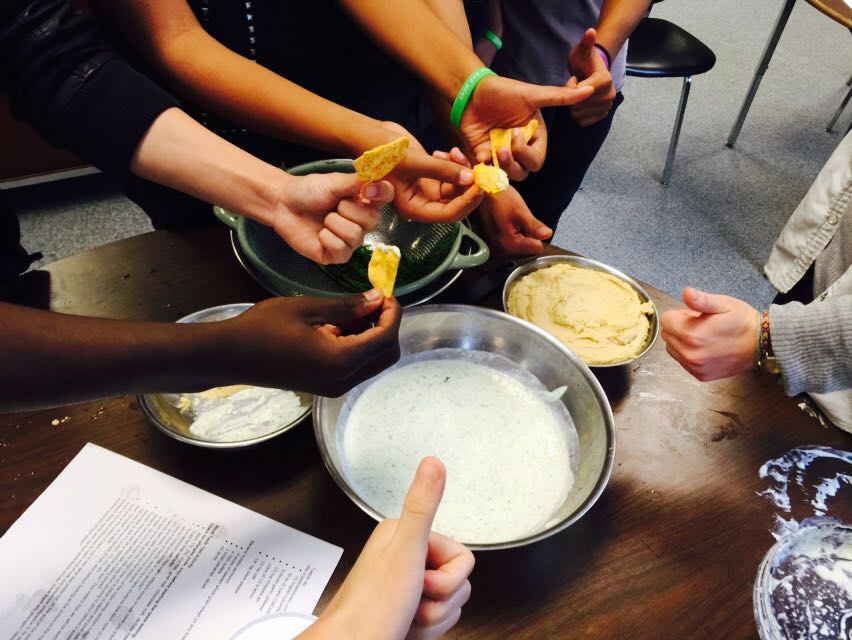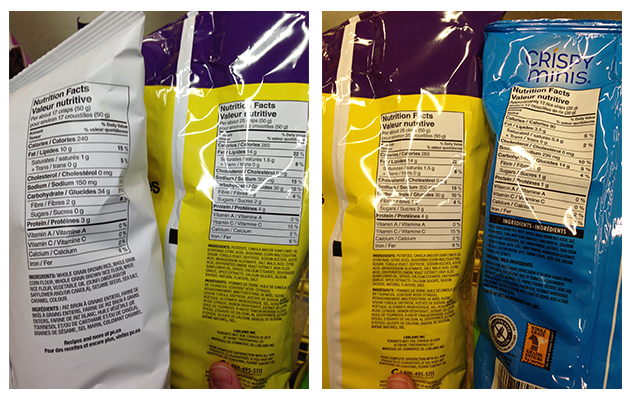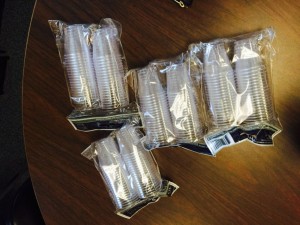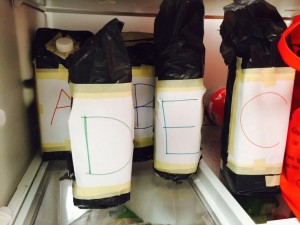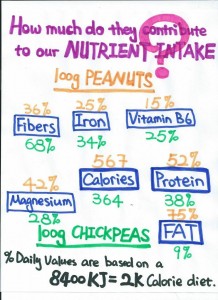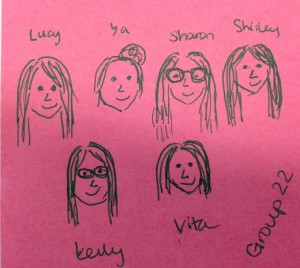Cooking with Friends at Tupper Homework Club: A Summary
How’s everyone doing in the past two weeks? Well, I have been excited all the time ever since I heard our mac & cheese and food-sorting activity were so popular among students at Tupper’s Homework Club! Our community partner, Teri, even used “a big hit” to describe how students loved this new snack. This was extremely encouraging, as our hard work finally paid off, and all the struggling and hard moments we have experienced at the beginning were not a waste of time. If you have lost your track of what was going on, let’s have a review of who we are and what we did:
We are group 22 in LFS 350. We are a collection of UBC students with passion about cooking and eating good food. This year, we participated in CBEL program and chose to cooperate with Homework Club of Sir Charles Tupper Secondary School to promote nutrition knowledge among students. Homework club has been run for 12 years at Tupper, previously supported by Pacific Children Resources Society in the past and currently by Hillcrest Center and Little Mountain Neighborhood House. On every Tuesday and Thursday, it provides students with fruit, vegetables and hand-made snacks during after-school times. Indeed, fruit and vegetables are healthy, but always having the same things seems to a bit boring, and snacks like PB&J should be altered with something healthier. Therefore, staff at Tupper wanted some LFS students with food and nutritional knowledge to bring some new ideas about how to encourage students to consume more nutrition-condense food. They also expected us to teach and monitor volunteer students to safely handle cookware during snack preparation.

With full enthusiasm, we started our work. We had three visits to Tupper on Wednesdays, October 14th, 21st, and November 4th, 2015. Chickpea salad sandwiches, Tsatsiki dip and hummus served with rice chips and vegetable chips, and mac & cheese made of whole-wheat macaroni and low-fat milk were prepared respectively. On the first visit, posters comparing nutrition values of chickpeas and peanuts were exhibited to encourage them to consume healthy sandwiches. A milk blind tasting workshop was held on our second visit, during which students tasted four types of milk (soy, goat, skim chocolate) with their label covered, chose the one they liked and were then told what they were. Food-sorting activity on the last visit let students to categorize different foods into four major food groups as defined by Canada Food Guide. Both quantitative (survey questions) and qualitative (observations and feedbacks from Tupper staff) data were collected to determine the effectiveness of our plans.
Many of our friends (college students) enjoyed eating chickpea salad sandwich because they knew it was nutritious, and its taste was not bad. So we thought it was very likely that teenage students would also give it a try after being informed of how nutritious it is. However, no one liked it, mostly due to the unpleasant flavors of mayonnaise, celery or chickpeas, as collected from their answers to survey questions. It was a quite frustrating but reasonable outcome for me, since it reminded me of one of the presentations in my FNH 250 course, which talked about eating insects. I still remember how horrible looking the cooked insects were, and no matter how the presenters stressed insects were rich in proteins and other nutrients, I didn’t dare to give a try. I guessed the students who saw the chickpea salad sandwich must have had the same feeling as me being encouraged to eat insects — NO!!!!!!
Having failed in our first try, we were a bit confused about what to do next. At that moment, we knew that we had to make sure that students would be willing to try new food, and that a balance between nutrition and flavor should be achieved. However, we were not experienced in this. Luckily, by talking with our TA and community partners, good ideas were brought out, among all of which, “starting with something that students are familiar with” was used as the priority of our further work (Teri Corcoran, personal communication, October 19, 2015). As Shulman (2005) mentioned, students are supposed to learn how to react when it comes to the situation that knowledge is limited but actions must be taken. I think we did a good job on this and learnt to see things from other people’s perspective. And not surprisingly, the next two tries were successful.
Speaking of the volunteer cooking session and workshops, the biggest impression of our community partners was the engagement of English Language Leaners (ELL). “Youth were excited to help out and challenge their classmates”, said J. Johnson, our community partner. And, Teri also mentioned “this dynamic created unique experiences to build on friendships and to take on leaderships roles in presenting the activities”. To add on these feedbacks, the two workshops not only benefited students’ social skills, but also attracted their interests in nutrition. For example, most students chose soy milk, of which some of them even had never heard, as their favorite during the milk blind tasting. Therefore, by holding such activity, students are informed with more types of milk and its alternatives and are encouraged to consume more milk products so that a higher intake of Calcium and Vitamin D can be achieved. Moreover, even though the food-sorting activity seemed to be a little childish for secondary school students, it still played a role in introducing new immigrants to Canada Food Guide and helped them to maintain a balanced diet with an approach that they might not have experienced in where they used to live.
Overall, the most useful tip about educating kids is that letting them be interested should always be the priority.
Frankly speaking, some limitations did occur and made some of our ideas fail to come true. For example, we wanted to make raw brownie balls with dates to tell students to consume less sugar, but it was crossed off from the list due to the budget issue. Also, we being not able to show up on Thursday to have a face-to-face conversation with all Homework Club students was a pity. Otherwise, students would be given deeper impression on our nutrition promotion actions, and we were also able to directly know their feelings about this project in order to make further improvements. Last but not the least, four months with only three visits is REALLY not sufficient for Homework Club to create their own food program on their own, which gives students fun nutrition/food activities and new snacks.
Therefore, we have two suggestions, one being given to our community partner and one being given to anyone who wants to promote nutrition among children. First, try to find a sponsor (or donation program) that is able to provide snack ingredients with low prices and, ideally, is willing to ship them to school so that the money is saved, and preparation time would be reduced by a lot. Second, try to interact with children as much as you can, and both of you will gain valuable experience.
Finally, I want to thank our community partner as well as LFS 350 instructors and TAs who had been so patient to us and had been always willing to help us out. I also want to thank the volunteers who have worked so hard preparing snacks and facilitating with workshops, as well as all students at Homework Club who showed excellent cooperation during this project.
It’s so hard to believe that it has come to the end of our last blog! Thank you so much for reading our stories and sharing your feelings and thought with us. There’s still a long way to go until everyone knows the importance of having a healthy diet and adequate nutrient intake. If our experience has inspired you to promote nutrition to your families and neighborhoods, this will be our biggest success.
Shirley (on behalf of group 22: Kelly, Lucy, Sharon, Ya, Vita and me)
Reference:
Shulman, L. S. (2005). Pedagogies of uncertainty. Liberal Education, 91(2), 18–25. Retrieved from http://files.eric.ed.gov/fulltext/EJ697350.pdf
